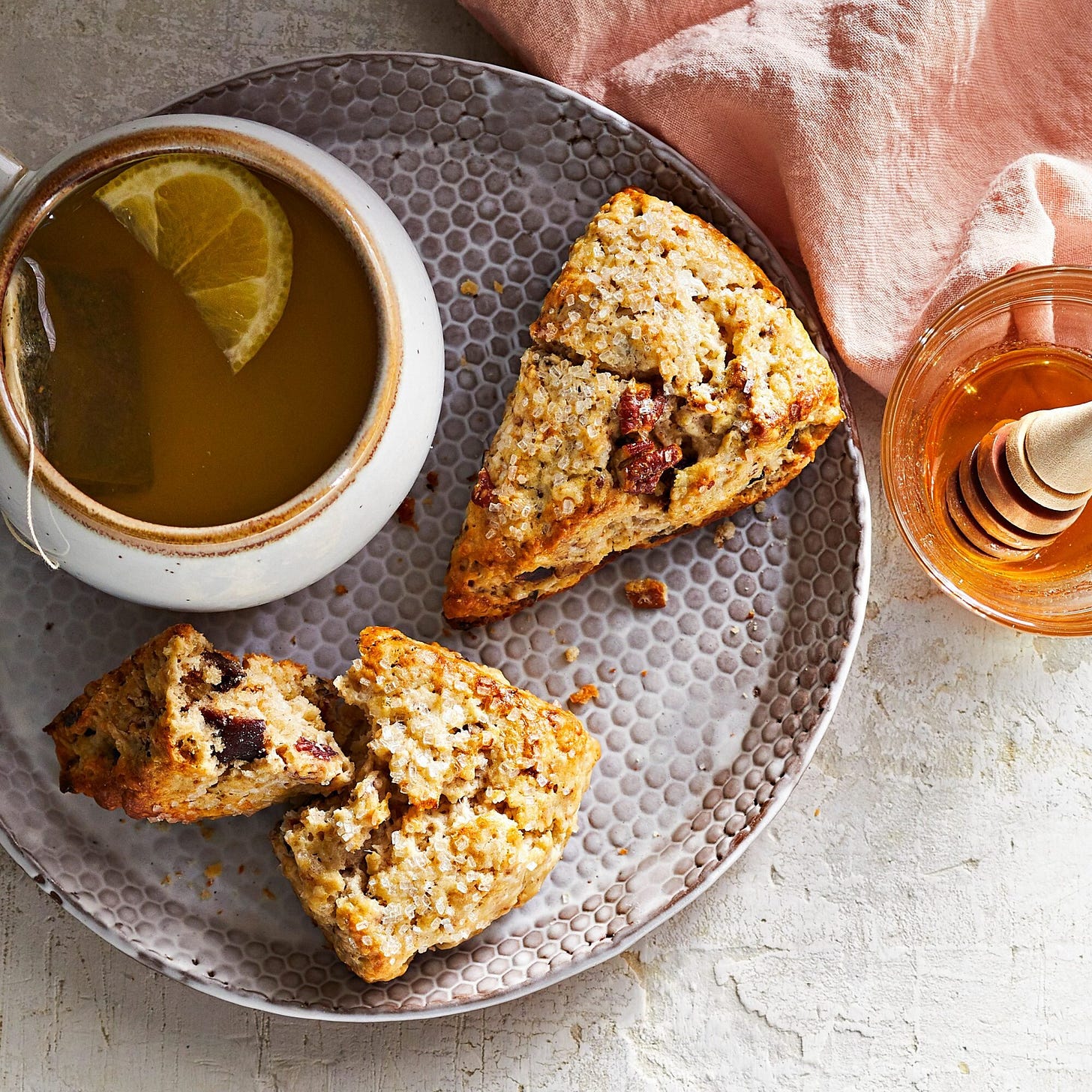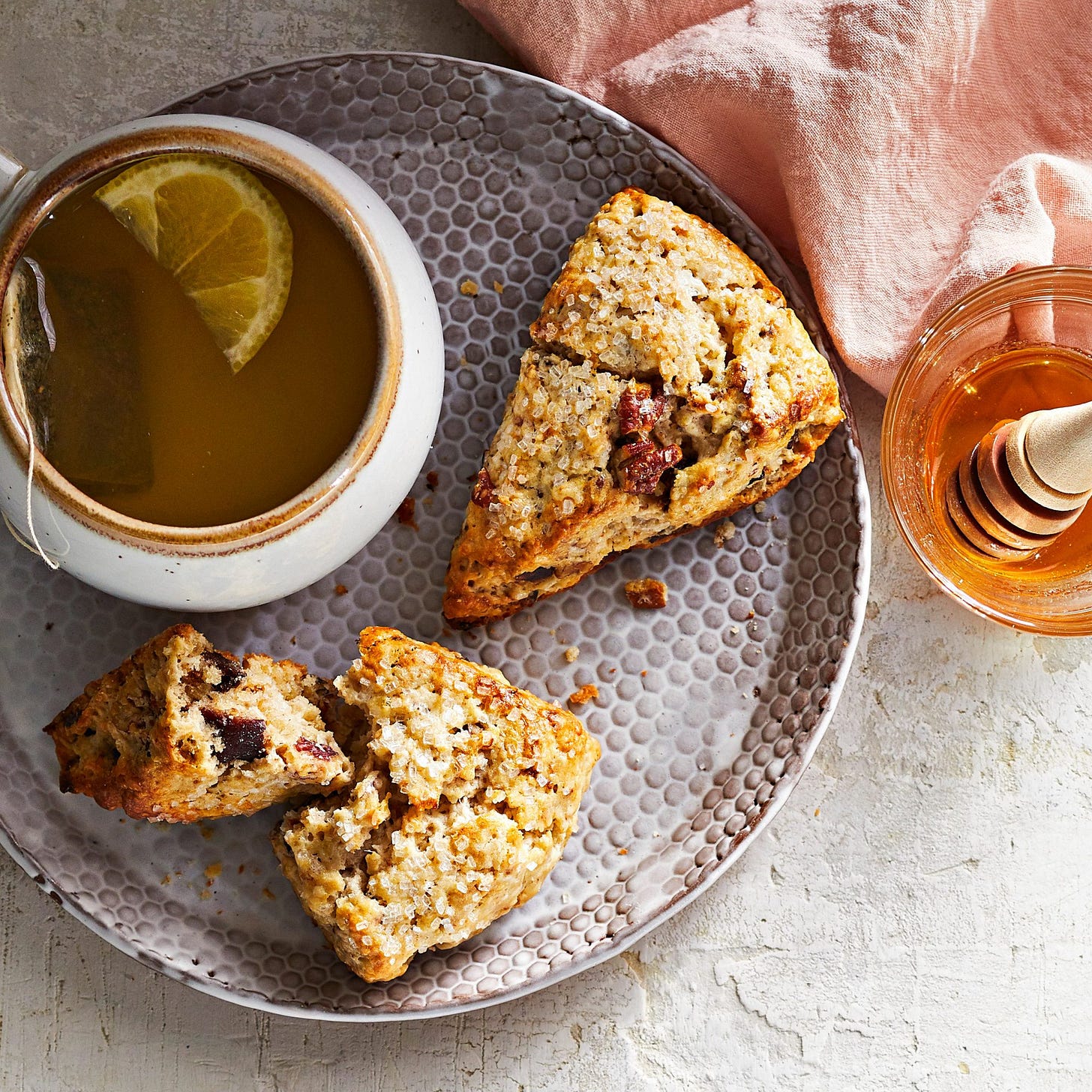The circle is a remarkable device, yielding the wheel, the crown, and civilization. In the kitchen, however, it poses problems.
The baker, inspired by the round scones enjoyed at many a British tea, sets to work. She crumbles butter into oat, pecan, and fig. She ponders the ancient Stone of Scone—an actual stone, from the Scottish village of Scone—where British monarchs accept their crowns. She rolls the pastry evenly and punches out discs, shuttling each to her baking sheet.
Turning back to the board, she frowns. She is left with leftovers—useless interstitial nubs, the negative space abandoned by so many positive little pucks.
She may be tempted to gather up these four-pronged stars, reroll, and recut. A risky strategy. While her first batch promises to bake up tender, the second may turn tough. The third embittered.
She could toss the prongs, tossing "waste not" caution as well. Or she could reformat. She rolls a single circle and slices spokes through the center, producing many wedges, no waste.
She admires the warm scones' fig-studded charms, their buttery bite and pleasing points. She smiles. There's so much to be said for math.




